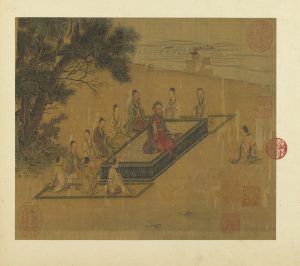It is my firm conviction that you can’t learn to write well by writing about things you don’t understand. If you are a good writer, I will grant that you can come to understand something better by writing about it; your prose will show you the limits of your knowledge. But this will not make you a better writer. It is an application of writing to the problem of thinking, and I take no issue with people who like to use writing for this purpose. What I object to is the argument that if you are not struggling at the edge of your understanding you aren’t really writing. That, I believe, is a dangerous myth about what writing is and what it can be.
Though it may be as prevalent (or more) among scholars, this myth is most pernicious among students. After all, students commonly write about things they don’t quite understand — things they’ve only just learned. Worse, they are often pretending to know things they don’t. I haven’t yet come up with a satisfying way to avoid this problem. There doesn’t seem to be a way around rewarding students for faking their mastery of a subject by writing about it beyond their depth. What are first-year university students to do when they are asked to expound on the causes of the Great Depression, the virtues of transformational leadership, the transcendental deduction of the categories of experience, or Hamlet’s love for his mother? Confine themselves to what they actually know about these things? I don’t think that’s going to work. I certainly don’t think I can persuade them to risk it.
But this doesn’t change the fact that if they want to learn how to write well they will have to practice writing about things they know. The difficulty of writing well about something does not stem from the difficulty of knowing it. That difficulty is of course very real, and I don’t want trivialize how hard it can be to understand things, but the problem of writing remains even when this work is behind us. In the case of academic writing, the difficulty is presenting what you know in such a way that another knowledgeable person can discuss it with you. How do you explain what you know to someone who is qualified to tell you that you are wrong?
Well, first you have to believe that you know what you’re talking about. But students generally aren’t trying to open their thinking to the criticism of their reader when they are writing their papers. They are trying to demonstrate that they have read the course material and attended class. Unfortunately, like I say, there isn’t really a way not to reward them for doing this, even when they are pretending to know something they don’t. In school, knowing what you should pretend to know is itself a competence — or it is at least often taken as a competence in the heat of an examination. A student who demonstrates awareness of the assigned readings is likely to outperform one who demonstrates only knowledge (no matter how real) of things that fall outside those readings. Given a curriculum, it’s hard to see how it could be otherwise.
But students who want to become better writers must practice writing what they know on a regular basis. A good way of doing this is to write about things that they learned last year, or least semester, or at least last week, and still understand well enough to build on. And a really good way of discovering such things is to take about five minutes at the end of the day to reflect on something you learned at the least before the weekend. It should come easily to mind in the form of a simple declarative sentence, and you should be able to imagine composing a paragraph of at least six sentences that support, elaborate or defend it. Then relax for the evening. Tomorrow morning, get up and spend 18 or 27 minutes composing that paragraph. This will make you a better scholarly writer.
When doing this exercise, the important thing is not to be struggling to know the thing you’re writing about. You should be writing from the center of your epistemic strength so that you can build your literary chops. Practice writing about an author or body of literature you know well. Practice writing about an organization or industry you are familiar with. Try describing a data set you’ve analyzed closely or a theory that you understand comfortably. And choose what you’re going to say based on how confident you feel about that simple declarative sentence. Don’t choose one that you feel uncertain about. Then write the best prose you are capable of, with the most competent reader you can imagine in mind. That’s the way to improve your writing through practice.

